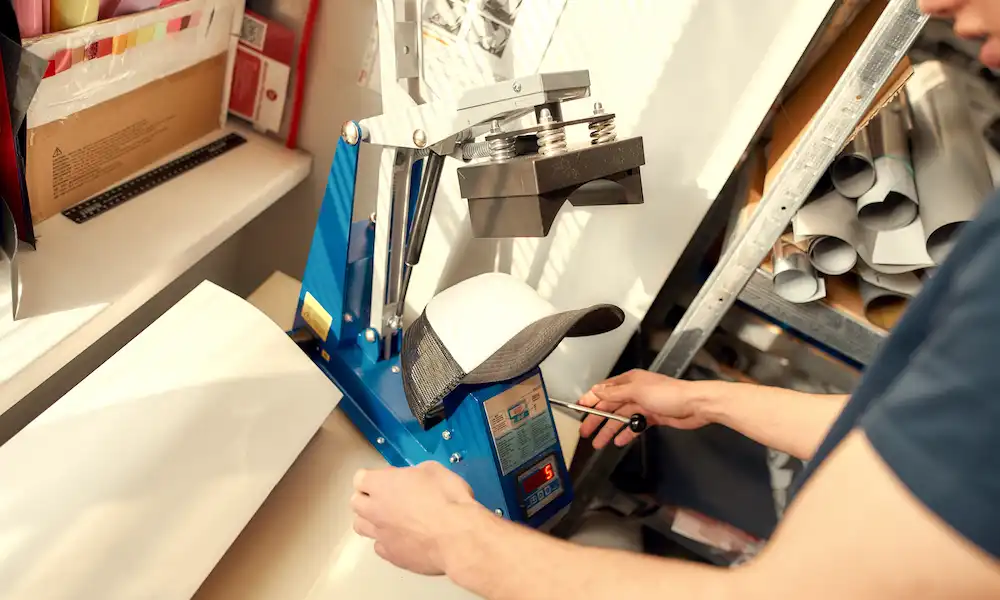Marketing
The Most Effective Methods for Branding Clothing

From hoodies to t-shirts, baseball caps, and hi-vis jackets, businesses use branded clothing as customer merchandise or staff uniforms.
However, specific considerations should be considered to ensure that your logo shows up to its best advantage on fabric and your branded clothing line is relaxed, comfortable, and enjoyable.
Choosing the proper method to put branding on clothing depends on factors such as fabric, design complexity, durability, and budget.
This article presents the various ways you can add branding to clothing.
Common Methods Used To Brand Clothing
There are several different methods for printing your logo on clothing, so decide which is best suited to your fabric, budget, and logo design. For instance, your logo can be uploaded to a stitching machine and embroidered onto your fabric.
Thick fabrics are most suited for embroideries, such as hoodies and custom trucker hats.
Screen printing is a great logo printing method if you have large quantities that need printing, such as branded t-shirts for merchandise or uniforms, as the screens have to be custom-made for each design. Screen printing is quite durable and can last on fabric for quite a long time.
Alternatively, you could opt for a vinyl sticker transfer. Although this is the least durable printing option, it is also the least expensive. The transfer is printed on a special printer then hot-pressed onto the fabric, though it can peel off if the clothing is washed in hot water.
Plus there are more methods to consider too.
Pros and Cons of Branding Methods
Let’s consider the pros and cons of the most popular method to adding images and text to clothing.
Screen printing
Screen printing is a process that involves creating a stencil or screen for each color in the design. Once the stencil is made, ink is pushed through the screen onto the fabric, resulting in the desired design.
Pro
Businesses love this method as it is particularly cost-effective for large quantities and is suitable for simple designs and logos.
Con
There is no getting around the challenge that screen printing is not ideal for intricate details or small batches.
Embroidery
Another method is using embroidery. Embroidery designs are created by stitching thread onto fabric with an embroidery machine.
Pro
What’s popular with the embroidery method is that it produces a durable and professional look and can be used on various fabrics.
Con
One consideration is it may not be cost-effective for very large designs or quantities.
Direct-to-Garment
Direct-to-garment (DTG) Printing is a process similar to a traditional inkjet printer, but it prints designs onto fabric.
Pro
Need to show off detail and color? The direct-to-garment method is highly effective for detailed and full-color designs.
Con
Unfortunately, this method may not be cost-effective for large quantities. Additionally, the durability of the print can depend on the type of fabric used.
Dye Sublimation
Maybe you want to consider using dye sublimation, which involves transferring dye onto fabric by applying heat and pressure, resulting in a bright and permanent design.
Pro
If the material is polyester, then you’re in luck, as dye sublimation is best suited for polyester fabrics, and it produces high-quality, long-lasting prints.
Con
Avoid using dye sublimation if your material is cotton or other fabric types, as it’s not recommended.
Vinyl Decals or Heat Transfer Vinyl (HTV)
Vinyl decals or Heat Transfer Vinyl (HTV) are two popular methods for adding designs to fabric.
In the vinyl decal process, designs are cut from vinyl sheets and then heat-pressed onto the fabric.
Pro
Vinyl decals or Heat Transfer Vinyl (HTV) is suitable for small batches and allows for intricate designs and multiple colors. HTV is known for its durability and is perfect for larger designs.
Con
Durability can vary, and it may not be ideal for very large designs. On the other hand, HTV cuts the design in reverse onto a sheet of vinyl, weeding out the excess material, and then uses heat to transfer the design onto the fabric.
Labeling and Tags
The brand name or logo is woven or printed onto labels and tags, then sewn onto the clothing.
Pro
The pro of using this method is it provides a professional and subtle way of branding the clothing.
Con
You can really only use it sparingly, i.e., it is limited to smaller areas and may not be as visible as other branding methods.
Final Words
Brand awareness is a vital part of marketing. Clothing is frequently used in branded merchandise to promote events like product releases and celebrate critical milestones like years in business.
Organizations carefully choose methods to add branding to promotional clothing based on their particular requirements, such as budget, target audience, and clothing type. This often results in a combination of techniques that may include those mentioned above.






